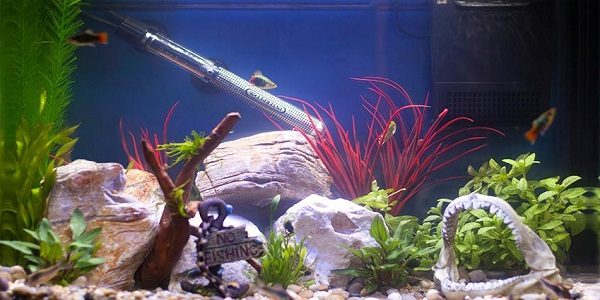Welcome to CoryCatfish.com
At CoryCatfish.com, we are passionate about everything related to Corydoras Catfish. Whether you’re a beginner aquarist or an experienced fishkeeper, our mission is to provide the most trusted and comprehensive information on Cory species care, breeding, tank setup, and compatible tankmates.
Why Expert Guidance Matters in Fishkeeping Success?
At CoryCatfish.com, we believe that knowledge and care go hand-in-hand. Our guides are based on both scientific research and real-world aquarium experience.
We make it easy for beginners and experienced hobbyists alike to find trustworthy advice, reliable tankmate tips, and care routines that actually work. You can count on us for clear, well-tested information — written with empathy and expertise.
We’re more than just a fishkeeping site — we’re a passionate community that values ethical care, clean habitats, and thriving aquatic life.
Our team constantly updates our resources to reflect the latest practices in freshwater aquatics. Whether you’re setting up your first Cory tank or breeding rare species, our tutorials and tips will guide you with clarity, compassion, and authority.
Aquarium Setup and Maintenance Tips

Substrate Selection
Corys are bottom-dwellers with delicate barbels. We strongly recommend soft, fine-grain sand substrates to avoid injuries and bacterial infections. Avoid sharp gravel that can damage their sensitive undersides.
Tank Size & Layout
While Corys are small, they thrive in groups of 5–6 or more, so a minimum of 20 gallons is recommended. We share various layout options for species-only tanks vs. community setups — including hiding spots, driftwood, and live plants to make them feel safe and active.
Filtration & Water Parameters
Good filtration is crucial, but strong currents can stress Corys. We guide you in selecting sponge filters or adjustable flow filters that offer biological support without overwhelming water movement. Maintain temperatures between 72–78°F, and a slightly acidic to neutral pH (6.5–7.5).
Lighting Tips
While Corys don’t demand bright lighting, a balanced LED light helps support plant growth and mimics day-night cycles. We recommend lighting schedules that maintain fish health and prevent algae.
Breeding Techniques & Raising Fry
Spawning Triggers
Learn how to simulate rainy-season conditions through cool water changes and high-protein feeding schedules. These natural cues often spark spawning behaviors like active chasing and egg-laying.
Dedicated Breeding Tank Setup
We cover ideal tank dimensions (10–15 gallons), bare-bottom setups for easy egg spotting, use of spawning mops, and the right filtration (sponge filters to protect fry).
Egg Protection & Fungus Prevention
After spawning, eggs should be monitored closely. We provide tips on separating eggs from adults, treating them with methylene blue to prevent fungus, and identifying fertile vs. infertile eggs.

Feeding Fry
The first few days are critical. Our guide includes schedules for feeding infusoria, baby brine shrimp, and micro worms. We also highlight common pitfalls like overfeeding or dirty water, which can lead to fry mortality.
Compatible Tankmates and Community Building
Corydoras are beloved for their peaceful, non-aggressive nature — making them ideal for community aquariums. But choosing the right tankmates is key to their health and well-being.
Top Recommended Tankmates
- 🐠 Neon & Ember Tetras – Small, calm mid-swimmers.
- 🎨 Guppies & Mollies – Peaceful and colorful additions.
- 🌿 Dwarf Gouramis – Best for tanks with plenty of space.
- 🧽 Otocinclus & Bristlenose Plecos – Excellent algae eaters that won’t compete with Corys.
Tankmates to Avoid
- 🚫 Cichlids (e.g., Oscars) – Aggressive and territorial.
- 🚫 Barbs (e.g., Tiger Barbs) – Known for fin-nipping behavior.
- 🚫 Large Predatory Catfish – May see Corys as prey.
Community Tips
- Use tank zones smartly. Since Corys inhabit the bottom layer, they get along well with mid- and top-level swimmers.
- Ensure all species share similar water parameters.
- Avoid overcrowding and always quarantine new fish before introducing them to the main tank.
Product Recommendations & Reviews
Choosing the right gear can be overwhelming, especially with so many options on the market. That’s why we rigorously test, compare, and review aquarium products based on performance, ease of use, price, and safety for Corydoras.
Substrates
Best soft sand and clay-based options.

Filters
Low-flow filters with strong biological support.
Foods
Sinking pellets, bloodworms, and Cory-safe wafers.

Aquarium Heaters
Stable and budget-friendly heating options.
Why Our Reviews Matter
- 100% unbiased — no sponsored bias.
- Based on actual use in Cory tanks.
- Updated regularly with user-submitted reviews.
- Includes pros, cons, and alternative options.
- Affiliate-safe links (non-aggressive) that help support the site without compromising experience or AdSense policy.
Must-Read Corydoras & Catfish Guides
Quick-Access Corydoras & Catfish Guides
Instantly navigate to expert articles on Cory catfish species care, breeding, tank setup and more at CoryCatFish.com.
Frequently Asked Questions (FAQs) & Fishkeeping Ethics
Transparency, education, and responsibility are the foundation of our aquarium philosophy. Our FAQ and Ethics section addresses your biggest concerns and supports new hobbyists in making compassionate, informed choices.
🦐 How often should I feed Cory Catfish?
→ 1–2 times daily with sinking foods. Avoid overfeeding.
🐟 How many Corys should I keep together?
→ Minimum of 5–6 for social bonding and natural behavior.
💧 Why are my Corys gasping at the surface?
→ Likely low oxygen; check water quality and filtration.
Ethical Topics Covered
- How to humanely euthanize a fish if suffering from untreatable illness.
- The importance of cycling a tank before introducing fish.
- Why not to keep fish in bowls or unfiltered environments.
Our Philosophy: Keeping fish is not just a hobby—it’s a commitment to life. We encourage proper education before purchasing fish, regular tank care, and providing a quality life for all aquatic pets.









